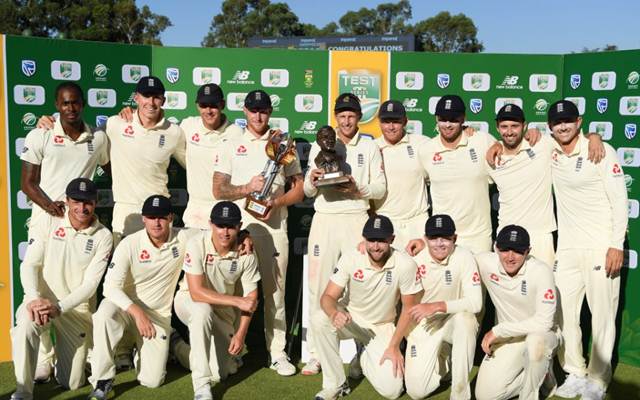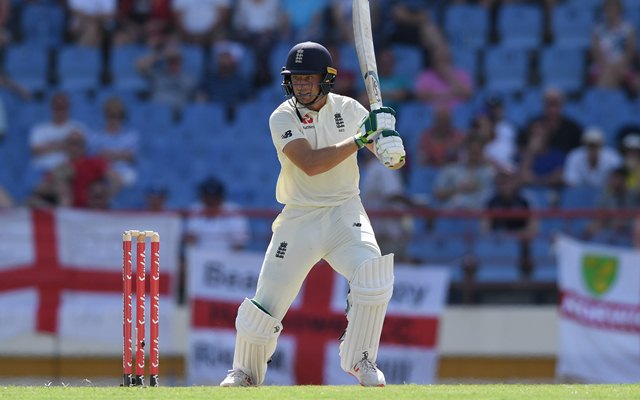The tale of England's resurgence and a peek into a promising future
Finally, things are looking better for England in the Tests.
2 Min Read


When Trevor Bayliss took over as the coach of the English team post the 2015 World Cup, the vision mainly was to transform them into a highly-skilled limited-overs outfit. It wouldn’t take long for the partnership of Eoin Morgan and Bayliss to remodel the three lions into a white-ball side that the world had never seen before. By the time Bayliss exited the setup in 2019, England had touched the pinnacle of One-day cricket, lifting their maiden 50-over World Cup.
Amid the unprecedented success in the limited-overs version, their performance in the longest format began declining. The change of guard from Bayliss to Chris Silverwood was supposed to be a fresh start, a new gameplan, few new faces into the scheme of things, and a change of approach to Test cricket. Understandably, there were pitfalls of accommodating a vast number of young athletes. But every team goes through the trials and tribulations of the transition phase before shaping a promising future.
Moreover, at times there’s no choice but to give an extended run to the ones who performed well in the domestic circuit to let them settle in the team. And England’s batting feebleness was still apparent; the openers were struggling to adopt the old-fashioned approach. The pressure of the middle-order fell mainly on Ben Stokes and Joe Root. Let alone the rookies; even the experienced seam bowlers were ineffectual when it came to making inroads with the Kookaburra ball.
England managed to save face at home even at the cost of the urn against an evenly-matched Australia, but Kane Williamson’s New Zealand exposed the English side in all the facets across two Tests. The only upside to the series defeat against the Kiwis was the World Test Championship not being part of the same; however, it also meant that England ended 2019 without a Test series win. When Joe Root’s men arrived in South Africa, not only there existed uncertainties over the makeup of their eleven, but also illness and injuries kept striking the camp over time.
The defeat in the first Test at the Centurion plunged them further in a state of malaise. A revamped coaching staff had done enough for South Africa to blindside the visitors. In the face of a loss, compounding injuries and unwellness, Silverwood had also indicated that they could drop one of their senior pacemen to pave the way for a spinner. And in the next three Tests across six innings, England made rapid strides in bringing about an improvement in all the departments that they had struggled in the past year.
The architects of a convincing series win
It began with Dom Sibley and Zak Crawley taking their time out in the middle by building a solid foundation and taking the shine off the new ball for the middle-order to accelerate. Sibley was the heavy run-scorer of the two. Along with mustering a patient century in the second innings in Cape Town, he made scores of 29, 34, 36, 44, 44 to finish as the highest run-getter for the tourists.
Notably, these scores came in the space of 784 balls, which is a testament of his temperament and concentration required in the opening position. On the other hand, Crawley registered only one half-century but got better with every inning to come to terms with the challenge of Test cricket.
Ollie Pope’s emergence as a competent batsman in the middle-order takes the pressure off Ben Stokes and Joe Root. Pope gives the present English side an Ian Bell-like security at number six, who the team can depend upon to steadily build the innings over long periods. The youngster batted with the tail on his way to a crucial fifty in the first innings in Cape Town and followed it with a classy hundred in Port Elizabeth. He piled up another fifty in the first innings of the fourth Test to finish with a batting average of 88.66 in the series.
One of the talking points from the final two Tests was the intensity with which Mark Wood steamed in and delivered. It is worth noting that the Durham bowler previously played back to back Tests in 2017, but never did he produce a performance as he did across Port Elizabeth and Johannesburg.
And given the constant injury problems he has endured, 12 wickets across two Tests can hardly be taken for granted. The prospect of Mark Wood and Jofra Archer bowling in tandem is one of the most mouthwatering ones to look ahead. But this is not to term the contributions of James Anderson and Stuart Broad as irrelevant.
The veterans, especially Anderson, who is rapidly approaching the twilight of his illustrious career, have nothing left to prove to anyone. But they have lived through the pain and continue to put themselves out there to stay in reckoning for the Ashes 2021-22.
And then there was Ben Stokes, whose display with both the bat and ball in different phases of the game helped England made significant progress. He is a cricketer at the peak of his powers, who averaged 45 with the bat and 22 with the ball. Spinner Dom Bess, who came in at the last minute, played a vital role in the tourists’ wins in the second and third Test. One can be sure of his place guaranteed as the second spinner along with Jack Leach to tour Sri Lanka.
There was something about Joe Root as well whose captaincy had a lot to with the success of the side. On the batting front, he looked in good nick for the most part; however, he would be disappointed not to notch up a single century in the series in which he averaged 45.28. And the most glaring piece of his leadership was his proactiveness and those innovative and attacking field placings that often swung the match for England. The winning margin of 3-1 in an away series against one of the top-Test playing nations is so far the most significant achievement for Root.
A highly promising future but not all sunshine and light

On the flip side, Joe Denly and Jos Buttler could be under pressure to maintain their spots after failing to attain a big score off the bat throughout the series. With Rory Burns set to miss the tour of Sri Lanka and a possibility of a recall to Keaton Jennings can see Denly getting sidelined from the squad. Jos Buttler’s batting average of 18.57 could find himself losing his spot to Surrey’s keeper-batsman Ben Foakes due to his heroics with the bat in Sri Lanka in 2018.
It is worth putting into perspective the modesty of this Proteas side. The fragile state of the economy has resulted in a mass exodus of players due to which the international team looks as vulnerable as any since their readmission. But this was England’s chance to be ruthless similar to how other outfits did during their assailability. And, if anything, the final three Tests gave birth to optimism that Joe Root’s men are marching in the right direction and maybe assembling a side, better equipped to challenge the likes of India and Australia at their home.
Download Our App